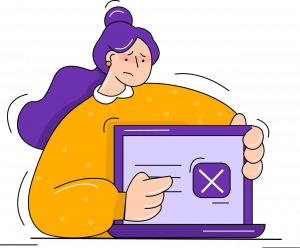Designers: do you know the difference between customer experience (CX) and user experience (UX) design? While this could be the learning of a full life, here are some basics. The impact that understanding the two distinct yet interconnected concepts can have on product design is remarkable. By embracing CX and UX, businesses can unlock unparalleled results in their product design strategy.
Product design is an essential component of any business strategy, whether this is an online product or service or a physical good design. It is the foundation upon which businesses build their presence in the market and find success. From the perspective of attracting new customers, creating products that meet the needs of target audiences is key. For a product to be successful and provide real القيمة المضافة to users, it must be designed with both customer experience design and user experience design in mind.
What is Customer Experience (CX) Design?
Customer experience (CX) design is the process of crafting an engaging, memorable and positive customer journey with a product or service. It focuses on delivering an optimal user experience designed to improve customer satisfaction and loyalty. CX design considers the entire customer journey:
from Customer pre-purchase research to post-purchase reviews and feedback
Every detail of the customer experience is carefully considered in order to create a unique, personalized experience tailored to the individual’s needs, preferences, and demographics.

Example on a website service: to provide the best possible CX, designers and marketers must take into account various factors like speed optimization, mobile compatibility, and personalization features such as product recommendations or الدردشة assistance. It is these small details that can make a big difference in terms of customer satisfaction and loyalty. Additionally, UX tools like heat maps and A/B testing can help to determine the elements of your product design that are proving most successful with customers.
Overall, CX design is an essential part of any successful product design strategy. By understanding the differences between CX & UX design and leveraging various techniques such as personalization and A/B testing, businesses can create designs that satisfy customers while also unlocking unparalleled results.

How to improve the customer experience?
Measure customer experience through a study or survey:
- Define the goals of the CX study: before beginning a CX study, it is important to define the goals of the study. This will help to ensure that the study is focused on the areas that are most important to the business.
- Identify the target audience: The target audience should be identified in order to ensure that the study is conducted on the right people. This could include existing customers, potential customers, or any other relevant group related to the service or product you intend to deliver.
- نصيحة: you should open to, in contrary, discover that the opportunities for your product lie in a completely different segment or market than the one originally chosen for the survey
- Design the survey: Once the target audience has been identified, a survey should be developed that will help to gather the necessary data. This should include questions about the customer’s experience with the product or service, price, intended use, emotions, expectations, as well as any other relevant information. Closed questions are of course easier to handle automatically later, but every survey should have some open questions, where the user can express whatever he wants, for feedback that would have not been captured in any other question
- Perform the survey & collect the data: once the survey has been developed, it should be distributed to the target audience. This can be done through email, social media, street surveys, websites, or any other method that is appropriate.
- Analyze the data and implement the changes: once the data has been collected, it should be analyzed in order to identify any areas of improvement. This could include changes to the product or service, or changes to the customer experience.
- Monitor the new results: once the previous changes have been implemented, it is important to monitor the results in order to ensure that the desired outcomes have been achieved. This could include tracking customer satisfaction levels or any other metrics that are relevant.
Note: read the gold nuggets for innovation article to have other means of getting customer ideas for improvement and customer feedback.

What is User Experience (UX) Design?
User Experience (UX) design is an approach to product design that focuses on enhancing user satisfaction. It is all about creating a product that meets user needs and solves their problems while also providing an intuitive, easy-to-use, and aesthetically pleasing experience. To achieve this goal,
UX designers must consider the usability, accessibility, desirability, and efficiency of the product
This includes conducting research on user habits and preferences, prototyping and wireframing possible designs, testing them on users to receive feedback, and analyzing the results to determine what works best.

At its core, UX design is about understanding users’ needs and creating products that meet those needs in the most efficient way possible. This can involve developing an interface that will make it easier for users to navigate the product and understand how it works. It can also include considering how well the product fits into the user’s lifestyle, as well as how visually appealing it is.
A customer experience strategy is needed to ensure that customers have a positive and consistent experience with a company. It helps to build trust and loyalty, create a competitive advantage, and increase customer satisfaction. A personalized customer experience should focus on creating a personalized, seamless experience and be tailored to the company’s unique products and services, as well as its target audience.
The process of UX design involves multiple steps such as conducting research on user habits and preferences, creating prototypes and wireframes of possible designs, testing those designs with users to receive feedback and determine which works best, and analyzing the results of those tests in order to improve the product design....
You have read 48% of the article. The rest is for our community. Already a member? تسجيل الدخول
(وأيضًا لحماية المحتوى الأصلي لدينا من روبوتات الكشط)
مجتمع الابتكار العالمي
تسجيل الدخول أو التسجيل (100% مجاناً)
اطلع على بقية هذه المقالة وجميع المحتويات والأدوات الخاصة بالأعضاء فقط.
فقط المهندسون والمصنعون والمصممون والمسوقون الحقيقيون المحترفون.
لا روبوت، ولا كاره، ولا مرسل رسائل غير مرغوب فيها.












Id argue that UX study interference can sometimes offer fresh insights. Isnt that a valid perspective?
Fresh insights, yes. But is it worth distorting user behavior and tainting results? Doubtful.
Can I suggest a deeper exploration of how these two disciplines can collaboratively enhance each other ?
it would be beneficial to clarify how these concepts differ in practical applications, such as in digital versus physical products
Great overview
منشورات ذات صلة
أحدث المنشورات وبراءات الاختراع حول الأكاسيد عالية الإنتروبيا (HEOs)
أحدث المنشورات وبراءات الاختراع على MXenes
أحدث المنشورات وبراءات الاختراع حول النقاط الكمية
أحدث المنشورات وبراءات الاختراع عن البيروفسكايت
أحدث المنشورات وبراءات الاختراع عن الجرافين
أكثر من 45 حيلة علمية للألعاب والتسويق: حيل تعتمد على البيانات والإحصائية